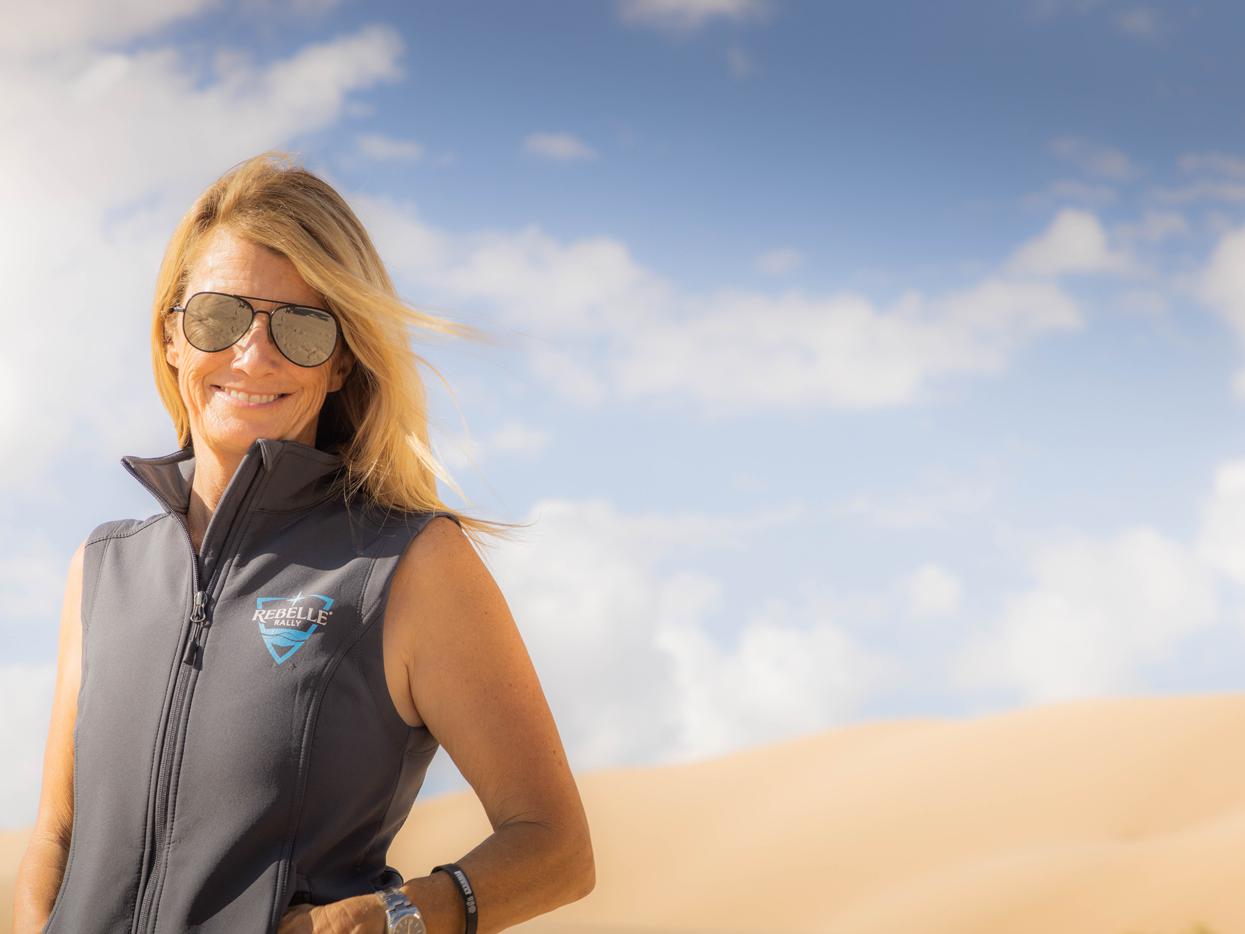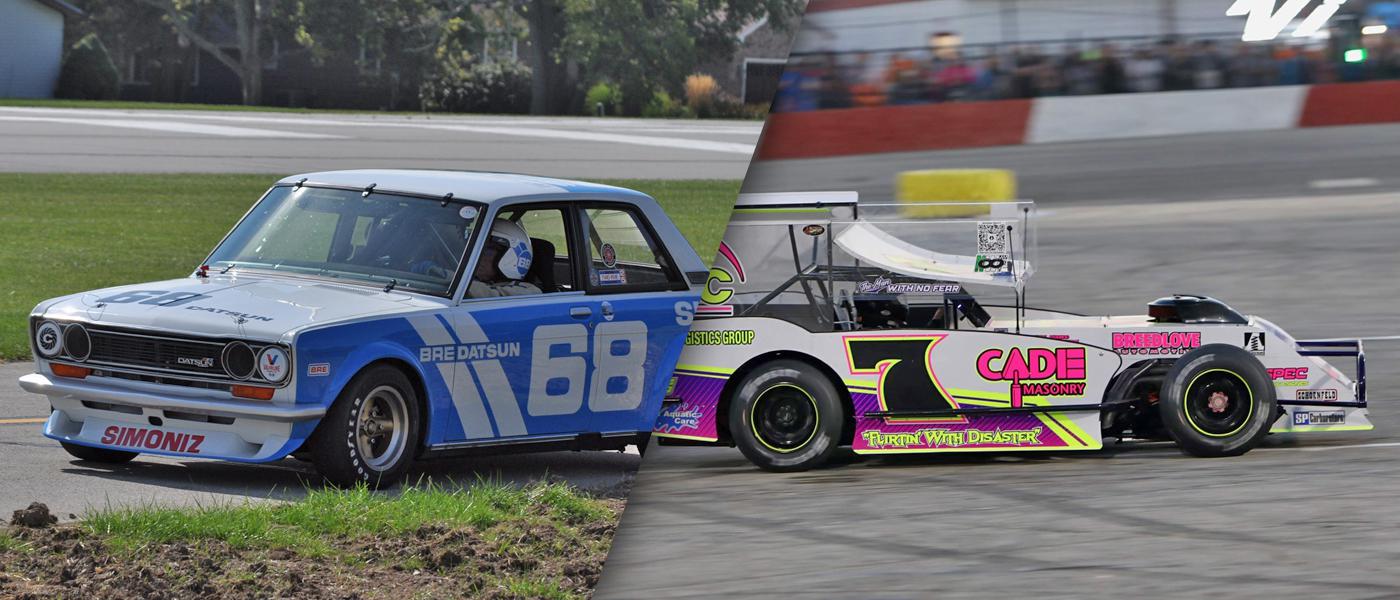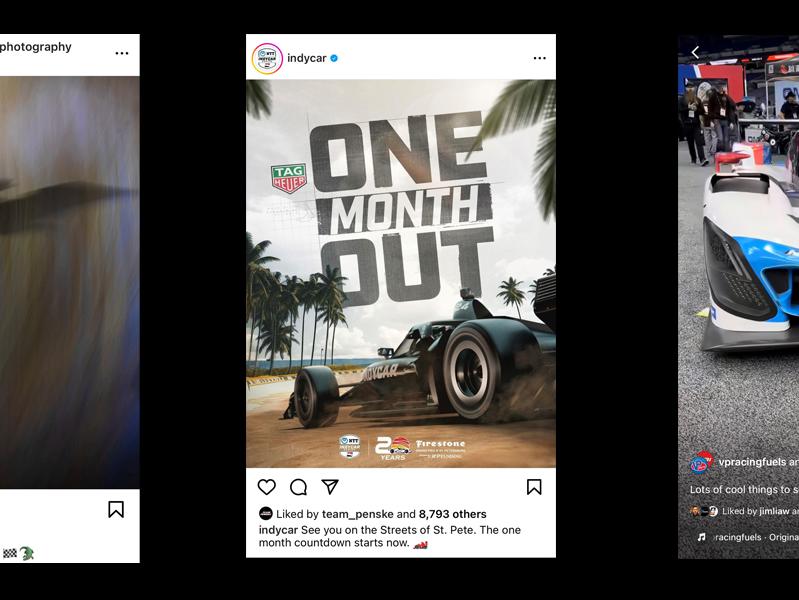Industry Insights: Frank Kelleher
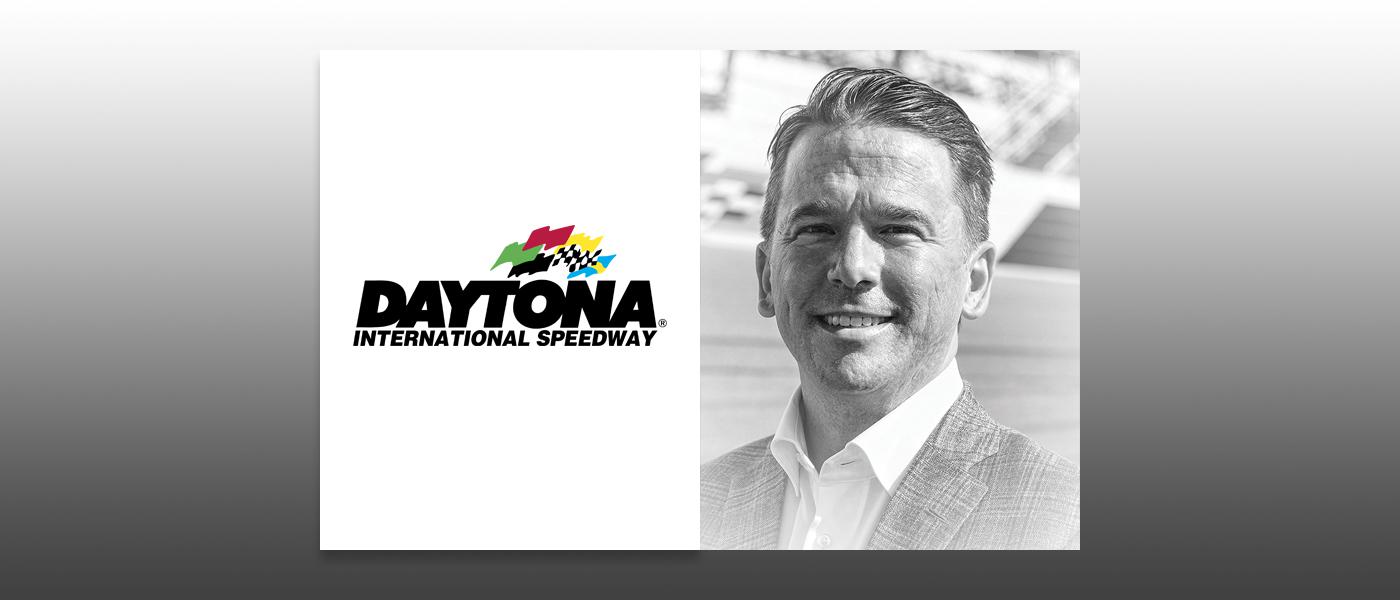
A blue-collar upbringing and promising kart racing career eventually gave way to “the business side” for the now-president of iconic Daytona International Speedway.
Frank Kelleher didn’t plan to become one of the leading executives in American motorsports. In his youth in Scranton, Pennsylvania, Kelleher grew up working in the family tire dealership, Kelleher Tire. He got involved in kart racing, winning two national titles, but didn’t have the financial backing to go pro.
It was an internship at International Speedway Corporation (ISC) that opened his eyes to the business side of racing. After coming up through the corporate structure in advertising and sponsorships, Kelleher is now the president of Daytona International Speedway. At just 41 years old, his best and most productive days are still ahead.
We sat down with Kelleher to find out what’s happening at the highest levels of ISC today and where things are headed in the future.
PRI: Your personal history reads like the opening of a great movie. What did you gain from that early experience that you’re putting to work at Daytona International Speedway these days?
Kelleher: As I reflect on childhood and growing up in a family business, I grew up in a very adult environment of understanding business and hard work and how the world actually operates. We were a Cooper Tire and Goodyear dealer and still are. My dad was up with the sun every morning and gone to the garage. Our whole family life revolved around the success or the hardship of the business. There were many years that we lived day to day, week to week.
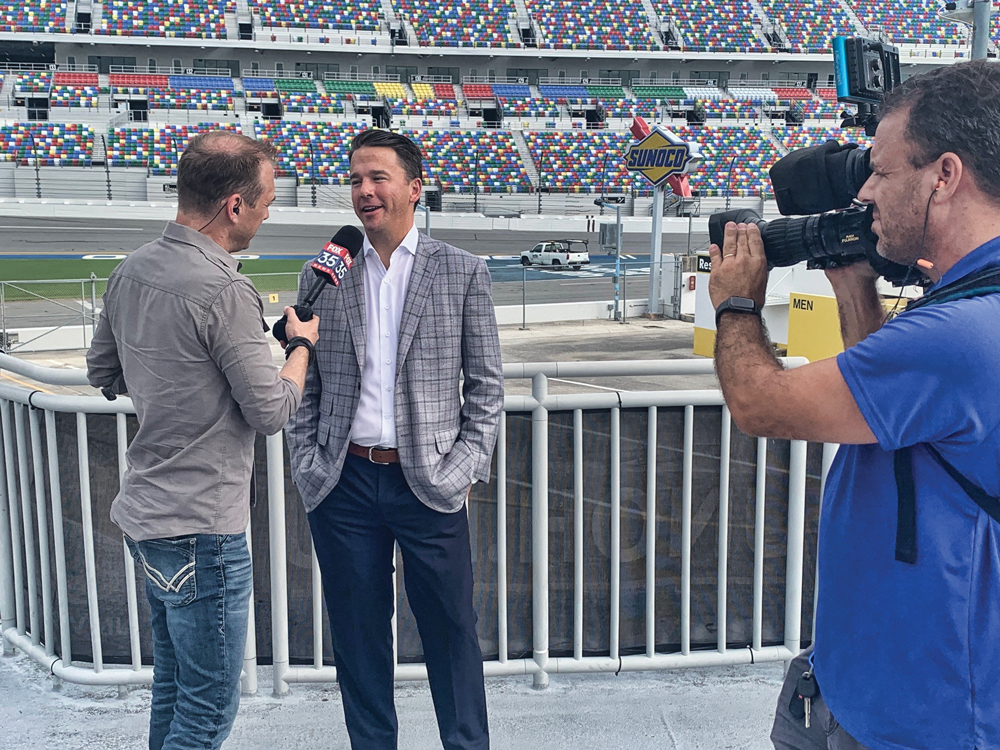
Because of that, from a very young age we all understood the value of hard work, the value of a dollar, and that you have to wake up every day and go out and earn it. As a teenager in high school and then in college, I worked six days a week in that garage. I did everything from changing tires, changing oil, working on cars, plowing snow, towing cars, very much in the blue-collar part of the automotive industry. Then when I got to college and was studying business, I had a different point of view. There was what’s in the textbook and also my real-life experience.
My introduction to motorsports was on the competition side, watching my uncle race a sportsman. I was on the pit crew for my uncle and for my cousin, who raced sportsman and then a modified and a sprint car. I got behind the wheel at 16 years old, racing karts on a dirt oval and then road course racing. We started running national events with the World Karting Association, and I got to be a two-time national champion. When I was at the race track, I had to be my own PR guy, my setup guy, my marketing guy, the sponsorship guy, and then be the wheelman and go out and get the job done.
PRI: When you were racing karts and working days at your family’s tire dealership and then going to college to learn marketing, did you envision a career like the one you’ve had, or was this sort of something that happened?
Kelleher: It just happened. I did not have a master plan. My goal was to drive open-wheel race cars. Whether it was IndyCar or Formula 1, that’s what I wanted to do. In my mind, if I couldn’t make it as a professional driver, then I wanted to race locally, whether that would be SCCA road courses or in the winged sprint car world.
I did my internship here in Daytona with ISC in the summer of 2002. I wrapped up my internship and I jumped back into the World Karting Association, national circuit. I had a scout approach me, and he said, “You’re a little bit old, but you’re articulate, and you clearly know how to drive. I think there could be opportunity for you. Are you financially independent?” I asked, “What does that mean?” He said, “Can you bring a half-million dollars to a race team?” I said, “Buddy, I essentially hitchhiked here.” And he said, “Well, let’s keep in touch.”
That was when the light bulb really went on. I figured that if I really want to be in professional motorsports, I need to be flexible enough to embrace that it might not be behind the wheel. But if I can follow up on my internship and work in the sport in some capacity, man, how cool would that be?
So I just continued to pester and follow up with the folks that I interned with. They offered me a job at ISC in the corporate office or at California Speedway in Fontana, and I chose corporate. My mentality was to approach this like I did any national karting event: Give it 110%. I’m going to be the first one in and the last one to go. I’m going to network with everyone. I’m going to travel as much as I can, ask all the questions, apologize if I made a mistake, and just be the person that I was raised to be.
Fast forward to six months ago [this interview occurred in November 2021]. I was the senior vice president and chief sales officer for all of NASCAR, selling official partnerships and sponsorships at our tracks for all of our media assets. The France family came to me and said, “We want you to go and learn the operational side and everything that comes with being the face of Daytona.” I’m honored at this opportunity to lead such a talented group of people and represent the most historic and storied stock car track in the world.

PRI: How are you defining success at Daytona International Speedway? What does winning look like in 2022?
Kelleher: How do we earn the fan’s business and how do we earn their repeat business? This facility outside my window right now, we did a $400 million renovation in 2016. And it’s beautiful. It’s awesome. Just the way that I’m wired though, we have to be planning for the next refresh. If we want to maintain our status as the World Center of Racing and hallowed ground, we have to be the industry leader. We have to be the tip of the sword when it comes to leading and innovating guest experience and competition.
PRI: How are you going to do that?
Kelleher: I think that I authentically can relate with that family in the Midwest or the Northeast or wherever in the country who is going to make sacrifices to get to Daytona and be a fan in the stands. If you’re going to travel this far and spend a lot of money, you want to get your money’s worth out of it.
In 2004, our infield and garage were cutting-edge. As I mentioned, we got a very big injection of capital in 2016 to redo our grandstands and our entry points. I think it’s time that we look at our infield and our garage experience and figure out what that new cutting-edge experience is for our drivers and our fans that you can’t get at any other race track in the world. We do a really good job as well of maximizing our calendar. There’s something going on in this facility all the time.
PRI: You’ve been president of Daytona for about six months now, coming in during the pandemic. How’s it going?
Kelleher: I am so thrilled with the leadership of our company and how they have been behaving and operating the last two-and-a-half years, through not only a merger but through the pandemic and the changes and evolutions they’ve made with respect to inclusion and social justice. And also what’s on the horizon of the Next Gen race car and the focus on competition.
Specifically regarding the pandemic, one of the many things I love about working for the France family is that this is a giant family business. When we went back to racing at Daytona and then at Homestead, we were all out laying down the social distancing stickers. I was putting the sanitation wraps on urinals and on the paper dispensers. We were doing it all ourselves. Regardless of your title and your tenure, we’ve got a job to get done.
PRI: You mentioned the social justice changes that have been happening within NASCAR and ISC. How are you approaching those discussions from your position as president at Daytona?
Kelleher: Regardless of the topic or the cause, change is hard, and everyone resists change at first. I want to enable an environment where people feel welcome and people feel safe and people can come together, whether it’s at Daytona or any of our properties. I want people to be able to leave politics and stress and anything keeping you up at night out of your mind. You can come here and celebrate and be taken away by a visceral experience, whether that’s a concert or a motorsports event or a food and wine festival. Whatever we need to do to enable everyone to feel welcome and safe, I’m excited to be a part of that.
PRI: What surprised you about taking over management at Daytona?
Kelleher: Having worked in the sport for 19 years, I thought I understood race track operations. Now six months into this role, I know I didn’t know anything. The ops team at Daytona International Speedway are some of the hardest working people that I know. This speedway is a living, breathing animal that eats capital daily.
We have events from quarter midgets to karting, then to motorcycles, sports cars, stock cars and tire testing. We’ve got a four-day rock music festival coming up. There’s always something going on, and these men and women work around the clock. It is hard, labor intensive work, and they do it with such pride that it’s a different level of accountability that I feel as their president. I want to make them proud. I want them to know that I see them, and I appreciate them. We want to deliver for our sponsors and our fans, because they play such a heavy and pivotal role that we’re all grateful for.
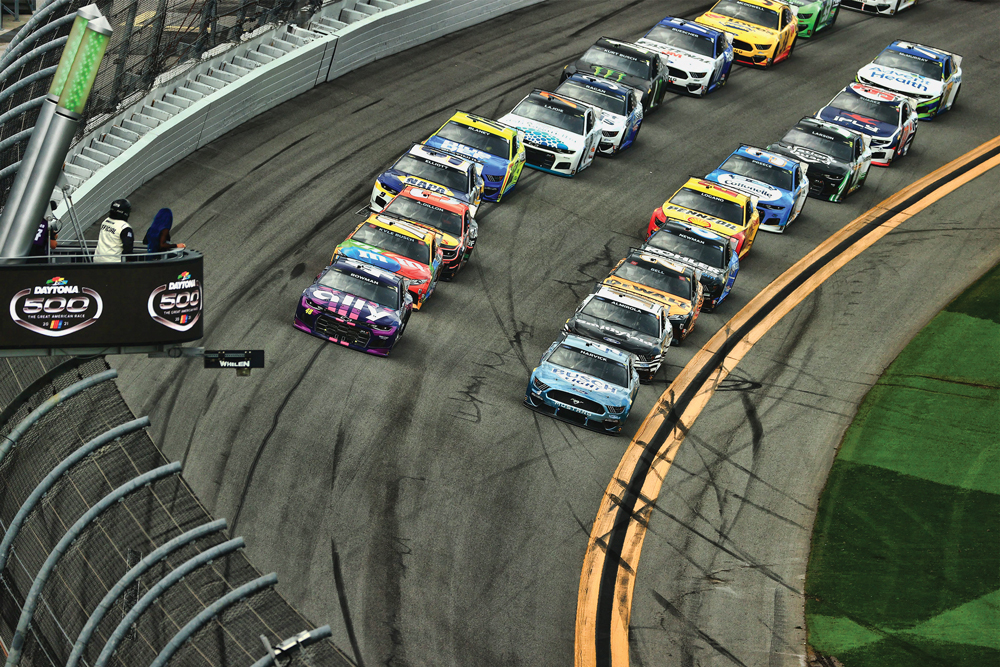
PRI: What are your short-term goals for the Speedway?
Kelleher: I don’t know what I don’t know. So I go into it with a lot of vulnerability and open eyes. I’m getting into my very first Rolex 24 weekend as the track president, and it’s the 60th running of the Rolex. I’m getting into my very first Speed Week as the president, as well as my very first Bike Week. So from a short-term standpoint, there’s a lot more that I want to learn. However, specific to the Rolex, I really want to maximize the fact that it’s the 60th running, and I really want to celebrate the past six decades and honor the men and women of IMSA and the Rolex for what they have created. For Speed Week, my short-term goal is to sell the Daytona 500 out sooner than we have the last few years. I’m aggressive with my aspirations! When we’re able to announce the sellout, I really want to pivot the focus to events such as the Xfinity race and the ARCA race on Saturday, which are phenomenal. The Truck race is one of my favorite races here in Daytona. And the Duel on Thursday is a blast. That’s going to be the first time that the Next Gen cars are racing the high banks in a point series race.
PRI: What are your longer-term goals for Daytona?
Kelleher: I want to take a step back and look at it from a global footprint: What is that next big sport or conference or exhibition? I want Daytona to be in that request for proposal to be a host for the next big thing, and I don’t even know what it is that could be on the horizon.
In 2023 for Rolex, we’re going to have a brand new class where a car that could race the Rolex 24 can also race Le Mans and vice versa. So I have a vision for a bigger global footprint for all things Rolex.
Also, this community embraces Daytona, and it embraces motorsports. I want to try to take it to a new level. I want to work with our local colleges and help create internships, help create job opportunities. My son is in first grade, my daughter’s in kindergarten. I want to work with Volusia County schools and figure out a way that this community can truly understand what this facility means not only to the backyard but globally.
PRI: The Daytona facility must have a lot of jobs that don’t necessarily involve racing cars.
Kelleher: We’re hiring! We need people to do HVAC, we need people to mow the lawn and we need people to be accountants and in finance and marketing and sales.
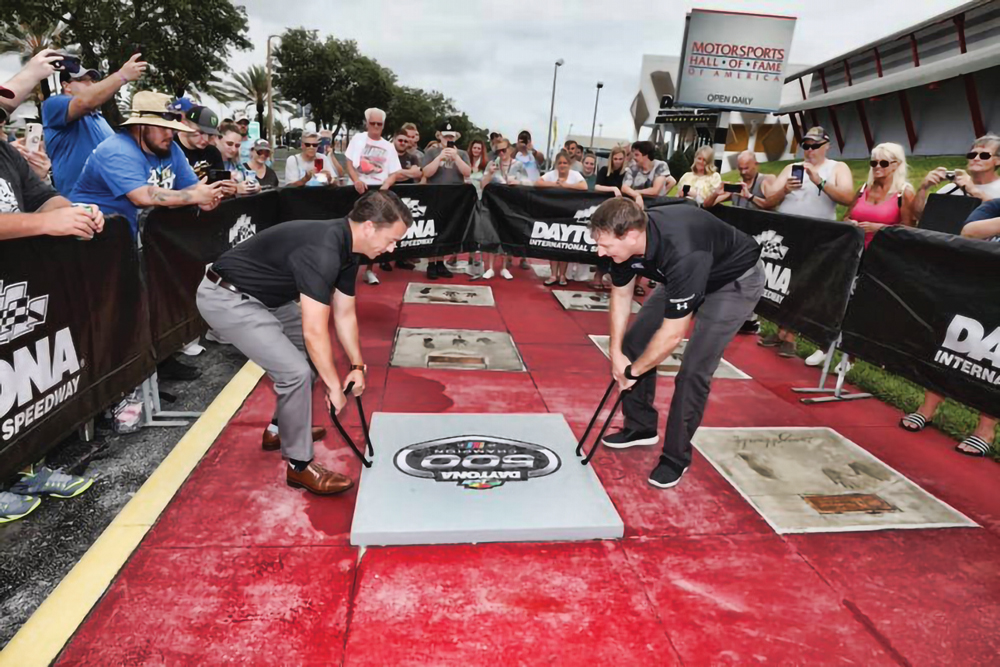
PRI: There’s a changing marketing and sponsorship landscape in motorsports right now. Where do you see that going, and how are you responding to it?
Kelleher: From a competition and sponsorship standpoint, the sport has evolved. That’s awesome because if you’re not evolving and growing, you’re dying. So our sponsorship base should continue to always evolve, and our fan base should continue to evolve.
Look at DoorDash doubling down on Bubba Wallace. This is a tech company out of Northern California with high-tech venture capitalist dollars. We developed a partnership where it is official with NASCAR and activating at tracks. What we are accomplishing in the sponsorship space specifically deserves more credit than it’s getting because we’re being very innovative. Historically, you had to talk to the track guy, the lead guy, the team guy and the media guy. But now a NASCAR sales rep can represent all of that in one conversation and bring all these people to the boardroom to help a brand say yes to the sport. That was not the case 10 years ago.
PRI: A couple years ago, Mazda had this iRacing competition going on at the Rolex 24 where the winner was going to get a test in an MX-5 Cup car. How does virtual racing play into the future of motorsports and the way that people are going to interact with Daytona International Speedway?
Kelleher: If you look back when the world shut down and the pandemic was at its height, NASCAR pivoted and flipped the switch on our iRacing product, and we stayed relevant in the sporting community. It was not just motorsports but in the sporting community, by having our top talent racing from their homes and apartments in their simulators and iRacing. We had high drama and some comedy along the way, but it kept us fresh, it kept us top of mind. To this day we still have some of the highest-rated video game competitions ever on national television.
For competitors, being behind the wheel on a simulator, you save a lot of expense when you toss a car in the fence. Look at the story of William Byron. That’s where he cut his teeth and got noticed, behind the wheel in a simulator. I see eSports, iRacing, and simulators being more of our fabric moving forward in the future from engineering and design, to training and finding talent.
PRI: You’re comparatively young in your career and you are at the top echelon of motorsports. What mountains are left for you to climb personally?
Kelleher: I always try to maintain humble roots and focus on what’s in front of me. For the next three to five years, I’ve got a lot to learn in this role. Every year, I want to continue to challenge myself and my team and this company to raise the bar to the next level. Beyond this role, I haven’t narrowed in on what would be next for me. I started my career with the France family, and I would like to end it with the France family. But I’m more focused on the excitement that I have for the short term.
 MEMBERSHIP LOGIN
MEMBERSHIP LOGIN JOIN PRI
JOIN PRI
